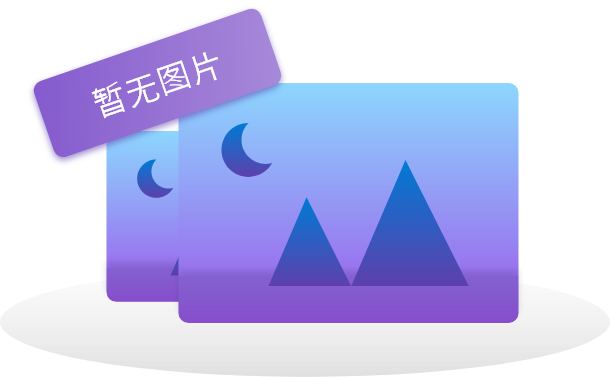Flink--Table Api 和 sql 之时间属性(一)
Flink时间
Flink总共有三种时间语义:Processing time(处理时间)、Event time(事件时间)以及Ingestion time(摄入时间)。关于这些时间语义的具体解释,可以参考另一篇文章Flink的时间与watermarks详解。本文主要讲解Flink Table API & SQL中基于时间的算子如何定义时间语义。通过本文你可以了解到:
时间属性的简介
处理时间
事件时间
时间属性概述
Flink TableAPI&SQL中的基于时间的操作(如window),需要指定时间语义,表可以根据指定的时间戳提供一个逻辑时间属性。
时间属性是表schama的一部分,当使用DDL创建表时、DataStream转为表时或者使用TableSource时,会定义时间属性。一旦时间属性被定义完成,该时间属性可以看做是一个字段的引用,从而在基于时间的操作中使用该字段。
时间属性像一个时间戳,可以被访问并参与计算,如果一个时间属性参与计算,那么该时间属性会被雾化成一个常规的时间戳,常规的时间戳不能与Flink的时间与水位线兼容,不能被基于时间的操作所使用。
Flink TableAPI & SQL所需要的时间属性可以通过Datastream程序中指定,如下:
final StreamExecutionEnvironment env = StreamExecutionEnvironment.getExecutionEnvironment();env.setStreamTimeCharacteristic(TimeCharacteristic.ProcessingTime); // 默认// 可以选择:// env.setStreamTimeCharacteristic(TimeCharacteristic.IngestionTime);// env.setStreamTimeCharacteristic(TimeCharacteristic.EventTime);
.一、基于 Table Api 和 sql 混用
1.处理时间
基于本地的机器时间,是一种最简单的时间语义,但是不能保证结果一致性,使用该时间语义不需要提取时间戳和生成水位线。总共有三种方式定义处理时间属性。
1.1 DDL语句创建表时定义处理时间
处理时间的属性可以在DDL语句中被定义为一个计算列,需要使用PROCTIME()函数,如下所示:
CREATE TABLE user_actions (user_name STRING,data STRING,user_action_time AS PROCTIME() -- 声明一个额外字段,作为处理时间属性) WITH (...);SELECT TUMBLE_START(user_action_time, INTERVAL '10' MINUTE), COUNT(DISTINCT user_name)FROM user_actionsGROUP BY TUMBLE(user_action_time, INTERVAL '10' MINUTE); -- 10分钟的滚动窗口
1.2DataStream转为Table的过程中定义处理时间
在将DataStream转为表时,在schema定义中可以通过.proctime属性指定时间属性,并将其放在其他schema字段的最后面,具体如下:
DataStream<Tuple2<String, String>> stream = ...;// 声明一个额外逻辑字段作为处理时间属性Table table = tEnv.fromDataStream(stream, "user_name, data, user_action_time.proctime");WindowedTable windowedTable = table.window(Tumble.over("10.minutes").on("user_action_time").as("userActionWindow"));
1.3 使用TableSource
自定义TableSource并实现DefinedProctimeAttribute 接口,如下:
// 定义个带有处理时间属性的table sourcepublic class UserActionSource implements StreamTableSource<Row>, DefinedProctimeAttribute {@Overridepublic TypeInformation<Row> getReturnType() {String[] names = new String[] {"user_name" , "data"};TypeInformation[] types = new TypeInformation[] {Types.STRING(), Types.STRING()};return Types.ROW(names, types);}@Overridepublic DataStream<Row> getDataStream(StreamExecutionEnvironment execEnv) {// 创建streamDataStream<Row> stream = ...;return stream;}@Overridepublic String getProctimeAttribute() {// 该字段会追加到schema中,作为第三个字段return "user_action_time";}}// 注册table sourcetEnv.registerTableSource("user_actions", new UserActionSource());WindowedTable windowedTable = tEnv.from("user_actions").window(Tumble.over("10.minutes").on("user_action_time").as("userActionWindow"));
2.事件时间
基于记录的具体时间戳,即便是存在乱序或者迟到数据也会保证结果的一致性。总共有三种方式定义处理时间属性.
2.1 DDL语句创建表时定事件时间
基于记录的具体时间戳,即便是存在乱序或者迟到数据也会保证结果的一致性。总共有三种方式定义处理时间属性,具体如下
读取kafka数据源,把系统时间设置为watermark.
CREATE TABLE hsh5(symbol VARCHAR ,prod_code VARCHAR ,hq_type_code VARCHAR ,user_action_time TIMESTAMP(3),// 时间类型要指定3位-- 声明user_action_time作为事件时间属性,并允许5S的延迟WATERMARK FOR user_action_time AS user_action_time - INTERVAL '5' SECOND)WITH ('connector' = 'kafka','topic'='xxx','properties.bootstrap.servers' = 'xxx','format' = 'json','scan.startup.mode' = 'latest-offset'-- 'scan.startup.mode' = 'earliest-offset' // 消费最早的);SELECT TUMBLE_START(user_action_time, INTERVAL '10' MINUTE), COUNT(DISTINCT user_name)FROM user_actionsGROUP BY TUMBLE(user_action_time, INTERVAL '10' MINUTE);
2.2 DataStream转为Table的过程中定义事件时间
当定义Schema时通过.rowtime属性指定事件时间属性,必须在DataStream中指定时间戳与水位线。例如在数据集中,事件时间属性为event_time,此时Table中的事件时间字段中可以通过’event_time. rowtime‘来指定。
目前Flink支持两种方式定义EventTime字段,如下:
// 方式1:// 提取timestamp并分配watermarksDataStream<Tuple2<String, String>> stream = inputStream.assignTimestampsAndWatermarks(...);// 声明一个额外逻辑字段作为事件时间属性// 在table schema的末尾使用user_action_time.rowtime定义事件时间属性// 系统会在TableEnvironment中获取事件时间属性Table table = tEnv.fromDataStream(stream, "user_name, data, user_action_time.rowtime");// 方式2:// 从第一个字段提取timestamp并分配watermarksDataStream<Tuple3<Long, String, String>> stream = inputStream.assignTimestampsAndWatermarks(...);// 第一个字段已经用来提取时间戳,可以直接使用对应的字段作为事件时间属性Table table = tEnv.fromDataStream(stream, "user_action_time.rowtime, user_name, data");// 使用:WindowedTable windowedTable = table.window(Tumble.over("10.minutes").on("user_action_time").as("userActionWindow"));
2.3 使用TableSource
另外也可以在创建TableSource的时候,实现DefinedRowtimeAttributes接口来定义EventTime字段,在接口中需要实现getRowtimeAttributeDescriptors方法,创建基于EventTime的时间属性信息。
// 定义带有rowtime属性的table sourcepublic class UserActionSource implements StreamTableSource<Row>, DefinedRowtimeAttributes {@Overridepublic TypeInformation<Row> getReturnType() {String[] names = new String[] {"user_name", "data", "user_action_time"};TypeInformation[] types =new TypeInformation[] {Types.STRING(), Types.STRING(), Types.LONG()};return Types.ROW(names, types);}@Overridepublic DataStream<Row> getDataStream(StreamExecutionEnvironment execEnv) {// 创建流,基于user_action_time属性分配水位线DataStream<Row> stream = inputStream.assignTimestampsAndWatermarks(...);return stream;}@Overridepublic List<RowtimeAttributeDescriptor> getRowtimeAttributeDescriptors() {// 标记user_action_time字段作为事件时间属性// 创建user_action_time描述符,用来标识时间属性字段RowtimeAttributeDescriptor rowtimeAttrDescr = new RowtimeAttributeDescriptor("user_action_time",new ExistingField("user_action_time"),new AscendingTimestamps());List<RowtimeAttributeDescriptor> listRowtimeAttrDescr = Collections.singletonList(rowtimeAttrDescr);return listRowtimeAttrDescr;}}// register表tEnv.registerTableSource("user_actions", new UserActionSource());WindowedTable windowedTable = tEnv.from("user_actions").window(Tumble.over("10.minutes").on("user_action_time").as("userActionWindow"));
参考:
https://ci.apache.org/projects/flink/flink-docs-release-1.13/docs/dev/table/sql/queries/window-agg/
https://mp.weixin.qq.com/s/Qvi2AshGjkaES-Ce\_dg6UA





























还没有评论,来说两句吧...